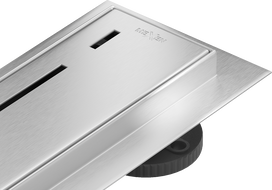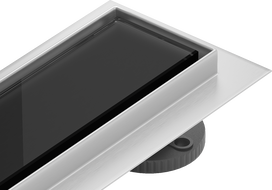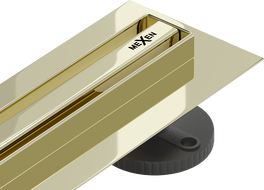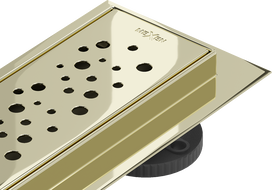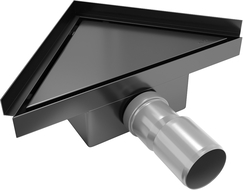
A shower without a tray is not just a trendy design but above all a practical solution. It offers more space and light in the interior, adds lightness, and influences aesthetics. It works well both in a spacious bathroom and a small one. The wide range of shower enclosures without trays and their ease of installation make us increasingly opt for such solutions. So, how do you create a shower without a tray? Here is the answer to your question.
Shower Without a Tray - Think Before You Start!
If you're dreaming of a shower without a tray, it's worth knowing that it can't be installed in just any bathroom. The best time to plan such a solution is during the construction phase of a house, before laying the tiles. You need to leave enough height for all the floor layers and provide the correct slope. This allows you to install the plumbing and ensure the optimal water flow across the shower surface.
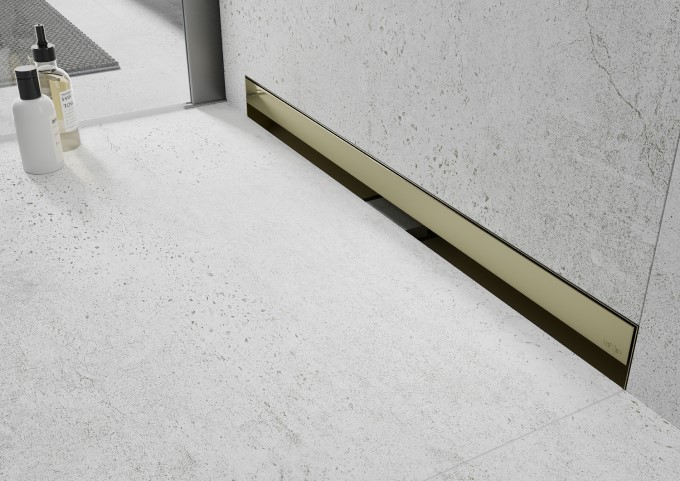
Where is the Best Place to Install a Shower Without a Tray?
In principle, you can place a shower without a tray anywhere, as long as you have enough space under the floor to fit the drain framework, trap, and pipes. You also need to provide a connection to the sewer system. Often, the solution suggests itself. Existing niches, recesses, and corners in the bathroom can easily be turned into a shower enclosure of any size, allowing for a tray-less shower, just like that.
Shower Enclosure in a Bathroom Niche
A niche limited by two walls is an excellent place to install a shower. It can easily replace a shower enclosure. You just need to fit it with doors - either sliding or hinged, depending on the space available. Such a "natural" shower enclosure requires no tray and is free of architectural barriers, as the shower doors have no thresholds, and the seal fits directly on the tiles. Of course, you need to install the correct linear drain to channel water from the entire floor surface.
Shower Enclosure Directly on the Floor
Your bathroom can also accommodate a shower enclosure without a tray, placed directly on the floor. This type of enclosure takes up little space and offers unlimited design possibilities. It is separated from the rest of the bathroom by just 2 panes and a door. Installing the enclosure in a corner of the bathroom reduces the number of panes required and allows you to decide on the size of the enclosure. Naturally, its placement should be preceded by the proper preparation of the substrate, ensuring that all water from the shower drains smoothly.
Walk-In Shower Enclosure
Instead of a complicated and hard-to-clean traditional shower enclosure with a tray, you can opt for a walk-in shower. This type of shower consists of a single panel of glass fixed directly to the bathroom floor, free from tracks and rollers. This provides easy access to the shower enclosure. However, for a walk-in shower to function perfectly, it requires the right drainage system to remove water from the bathroom tiles and effective ventilation.
What Linear Drain for a Tray-Less Enclosure?
Every shower enclosure, regardless of its type and installation location, must be equipped with the appropriate linear drain, otherwise, water will accumulate on the bathroom floor. There are straight, corner, and curved linear drains available for purchase. Only the decorative cover or a grille filled with tiles is visible. You can also opt for a point drain. Regardless of the type of linear drain, each requires a different floor slope to ensure proper drainage direction. It should also be installed approximately 2 mm below the tile level.
Tray-Less Shower - How to Make Correct Water Drainage?
When opting for a shower without a tray, you must first create a plumbing connection. Below the floor surface, there must be space for the drainage fittings and pipes to carry away the water. To ensure efficient drainage, you need to maintain a 2.5% slope for the pipes.
The waterproofing is also crucial and is best done using liquid foil. This should be applied not only to the floor but also to the shower walls up to a height of at least 1.5 m. Its application doesn't require much skill and is effective. Thanks to liquid foil, water won't seep through the ceiling or the bathroom walls.
Tray-Less Shower Installation - Final Stage
Installing a shower without a tray requires the proper preparation of the outermost floor layer. The tiles used for this purpose cannot have protruding decorations. You also need to maintain the appropriate floor slope towards the drainage. Installing a linear drain near the wall requires a one-way floor slope, whereas opting for a solution with a drain in the center of the shower enclosure requires a two-way slope. The cover should be mounted approximately 1-2 mm below the tile level. You also need to consider the thickness of the adhesive mortar and tiles.
In the case of drain installation, every step matters. Choosing the right tiles, maintaining the correct slope, and carrying out careful execution will make using the tray-less enclosure a true pleasure.



















